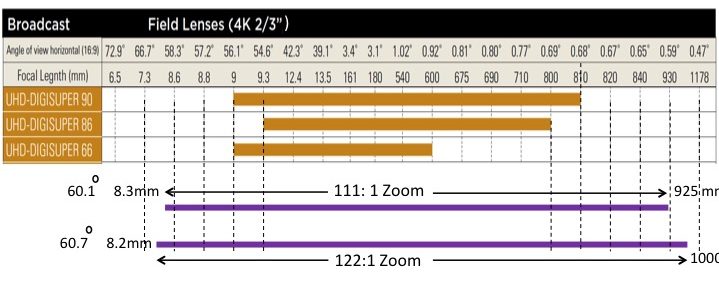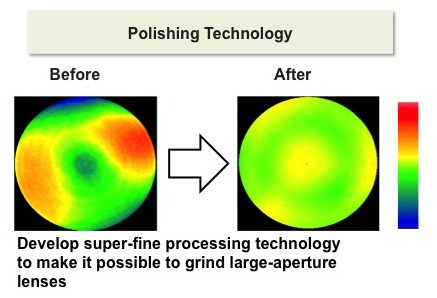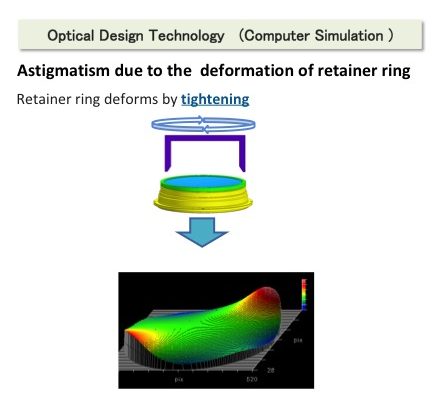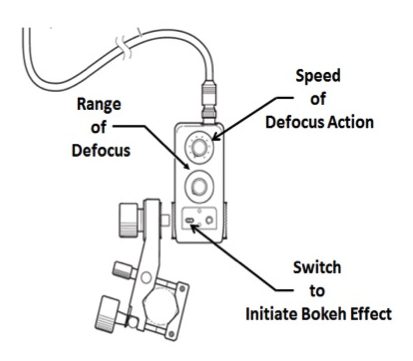Canon White Paper: Technological Advances in 2/3-In. 4K UHD Long-Zoom Field Lenses
Story Highlights
Significant 4K UHD outside broadcast coverage of major sporting and other events have taken place on a global scale over the past few years. Overall, a considerable breadth in experiences was gained. More recently, explorations in wide color gamut (WCG) and high dynamic range (HDR) have been added to many ongoing 4K UHD productions. A broadening discussion on how 4K UHD augmented by WCG/HDR might be exploited to differentiate imagery from the traditional HDTV productions is underway. The association of the significant image enhancement with steadily increasing screen sizes in living rooms has inevitably led to discussions of new possibilities in image framing that might enhance sports viewing, and more creative imagery in coverage of concerts and other major events.

Challenges were specifically directed to optical manufacturers to develop 4K field lenses that could better exploit the full potential of 4K UHD/HDR/WCG. This paper describes a major development project that produced the longest known broadcast zoom lenses with outstanding 4K optical performance and a number of innovative operational enhancements that allow them to address the highest production levels.
Focal Ranges of Contemporary 2/3-inch HDTV Long Zoom Field Lenses
Broadcast HDTV long-zoom field lenses supplied by the major optical manufacturers are now in their third generation. Figure 1 summarizes the focal lengths available today among the latest generation.

A longstanding technical dilemma in zoom lens design is well illustrated here – when extended focal ranges are achieved in a given lens the wide angle end is, of necessity, curtailed in terms of the angle of view. Significant optical conflicts are entailed in attempting to extend both in a single lens.
Focal Ranges of Contemporary 2/3-inch 4K UHD Long Zoom Field Lenses
Broadcast 4K UHD long-zoom field lenses are still first generation. Figure 2 summarizes some of the focal ranges available today among the latest generation.

Figure 2: Focal ranges of the first generation Canon broadcast long zoom 4K UHD field lenses
Here again we see the struggle of the optical manufacturers as they seek to extend both ends of the focal ranges of long zoom lenses.
Desire for Extended Zoom Range and Wider Field of Views
Increasingly, the optical manufacturers have been hearing a plea for more telephoto AND wider angles field of view from a production community who seek to better exploit the imaging potential of 4K UHD on larger consumer displays. With this as background a major project was launched within Canon to develop a field lens that would push the boundaries of all three core specifications (see Figure 3) to support creative innovations in high-end production of sports, concerts, and special events.

Figure 3: Goal was to extend all three of the core specifications of a new ultra-telephoto lens2
The Breakthrough
Fortunately, recent years have seen dramatic advances in a variety of optical sciences – encompassing optical design theories, more powerful simulation tools, new glass materials, new processes, new strategies and techniques in optomechanics, advanced coating technologies, and refinements in manufacturing, optical assembly and alignment.
A mobilization of all of these technological advances supported the breakthrough that oversaw the development of two long-zoom 4K UHD field lenses that simultaneously extended the focal range at both extremes – as shown in Figure 4.

Figure 4: Two new long-zoom 2/3-inch 4K UHD field lenses that extend focal range at both extremities
The Technologies Entailed
To achieve the dramatic extension in focal range –while simultaneously achieving a level of UHD optical performance that is defined by Canon as 4K Premium (clarified in the next section) – required a total re-visit of the overall optical and optomechanical system designs. Figure 5 outlines the innovative new lens optical groupings that make up the total optical system.

Figure 5: Red arrows indicate the movements of the three lens subgroups G2, G3, and G4 when zooming from wide end to telephoto end
Inner Floating Focus System (G1) – is comprised of three separate lens element groups with a differential movement of the two groups within G1 implementing the focusing action.
Multi Group Zoom Optical Subsystems (G2, G3, and G4) – comprised of G2 (known as the Variator) and the two groups G3 and G4 (collectively known as the Compensator) move differentially with respect to each other during the zooming operation. This is a highly sophisticated system whose overall design was critical to minimizing the movements of system MTF during zooming and to curtailing both monochromatic and chromatic aberrations.
Rear Group (G5) – are critical to the compensation for various lens aberrations.The following summarizes the high level design strategies required to achieve the leap forward in focal range and the enhanced 4K UHD optical performance:
- New advances in optical design theories aided by powerful computer simulation capabilities
- Innovative new multi-group moveable lens elements for reduction of zoom fluctuations in MTF
- New Inner floating focus system design contributing to optimization of the falloff of MTF across the total image plane
- Greater use of aspheric lens elements
- Fluorite, Super-UD, and UD glass elements in new configurations to help significantly tighten control over chromatic aberrations
- First use of Air Sphere Coatings (ASC) in a broadcast lens
- Advances in material technologies, processing technologies and polishing technologies
In the context of HDR the Air Sphere Coating (ASC) technology is a critically important additional layer on top of the normal multilayer coatings that are used to minimize internal reflections that conspire to lower light transmission efficiency and to contaminate deep black reproduction. ASC comprises sub-nanometer spheres that implement an ultra-low refractive index layer that is powerful in its ability to remove any residual reflection – as shown in the bottom right image in Figure 6.

Figure 6: Illustrating the reinforcement of ghost canceling offered by the addition of the ASC layer
Clarification on 4K Premium Optical Performance
The highest priority was given to meeting the challenging new operational goals while simultaneously achieving 4K optical performance that would fulfill the highest performance 4K UHD field cameras. In the context of the small 2/3-inch image format this demanded close attention to picture sharpness and minimization of optical aberrations – most especially chromatic aberrations.

Figure 7: Showing the salient performance parameters that contribute to overall 4K Premium image quality
First and foremost in a 4K optical system is maintaining a high MTF: (a) across the 16:9 image plane; (b) over the total focal range; and (c) over the range of anticipated subject distance. Numerous optical strategies were mobilized that centered about selection of glass materials, lens group designs, judicious placement of aspheric elements, and in manufacturing, exceedingly tight control of element surface tolerances.
Considerations of HDR and WCG necessitated the deployment of new multilayer coatings to help facilitate clean black reproduction (HDR) and an augmented spectral transmittance (WCG). A particular challenge lay in minimizing chromatic aberrations whose visibility is enhanced by the combination of HDR and WCG, and by the fourfold increase in camera resolution over HDTV. Multiple new optical strategies were deployed to successfully render them virtually invisible in HDR imagery, including the deployment of aspheric lens elements within the multigroup zooming system.
Also among these strategies were significant advances in lens polishing technologies that allowed nanometer level control over surface tolerances – critical for 4K sharpness.

Figure 8: Analysis of lens element surface tolerance following super-fine polishing process
Powerful computer simulation capabilities have greatly reinforced the capabilities of design engineers to optimize both optical performance and optomechanical precision. One illustration is the ability to predict the tiny degree of deformation of a lens element by its mechanical retaining system – a deformation that can impair the accuracy of ray transmission required for 4K resolution. Simulation allowed exploration of new optomechanical strategies to firmly support lens elements while minimizing their deformation.

Figure 9: The prowess of computer simulation aided the optimization of optical and optomechanical designs that minimize physical deformation of the lens element (shown in the lower image)
Image Stabilization
A field lens having an unprecedented 122x or 111x zoom range is subject to image blur caused by even the smallest physical perturbation or vibration. This is even more acute when dealing with 4K resolution in the small 2/3-inch image format size. Accordingly, the highest attention was paid to significantly improving the built-in image stabilization system. The challenge of long focal length lenses had earlier spurred development of the Shift-IS technology, which lends itself very well to correcting modest amplitude disturbances and vibrations. In this technology, a lens group is placed near the rear of the overall lens system and the correcting action entails a horizontal or vertical (or both) very fast physical shifting of that lens group to implement the requisite change in the path of the light rays. Voice coil motors (VCM) constitute an actuator having excellent control characteristics when movement with precision force is required over short distances within an electronic control system. They constitute a direct drive having high force and acceleration, with no overshoot or backlash. The voice coil motor can develop a strong force in either direction by reversing polarity of the exciting current through the coil and its inherent zero hysteresis renders this action ideal.
Improvements in curtailment of image blur, handling of higher vibration frequencies, and virtual elimination of interference of the IS correction system on normal lens panning and tilting operations are embodied in both lenses.

Figure 10: The vibration reduction has been significantly improved at the higher frequencies
New Creative “Bokeh Effect”
Long zoom field lenses are used to cover major concerts and other events, and here creative aspirations seek effects that can possibly add to the visual story-telling. In anticipation of this continuing trend, Canon is introducing a totally new operational control in these two new field lenses – that is termed“Bokeh Effect”. The term “Bokeh” is known as a descriptor for the aesthetic quality of the blur produced in the out-of -focus parts of an image produced by a lens.

Figure 11: Showing the progressive defocusing that can be introduced by the camera operator
This new operational control moves part of the rear optical group G5 in the lens to implement the precision degree of defocus (see Figure 5).

Figure 12: Showing the macro controller available to the camera operator to implement the new “Bokeh Effect”
When close to the wide end focal length of the lens – where the focus control has little effect on actual scene focus – this new macro control allows the camera operator to introduce a variety of controlled blurring effects into the image. Both the degree of blur and the speed of its implementation are adjustable by the camera operator. There is zero angle of view alteration. The effect can be switched off at will and precise focus is restored. Of special note is that the introduced blur is equally effective at the extreme telephoto focal range.9
Summary
Canon engineers have become increasingly immersed in product developments associated with 4K cinematography and 4K UHD broadcast television – both further augmented by HDR and WCG – and this has stimulated many quests to more fully exploit the creative power of this extraordinary imagery. The appreciation of the superb scene details that can be captured by a wide angle of view in a 4K lens, and the equally stunning vivid portrayal of distant subjects by ultra-telephoto capabilities, combined to spur the Canon design team to undertake a major development project to combine both within a single field lens. At the same time the desire to further advance the 4K image quality itself – in terms of high sharpness over the entire image flanked by superb HDR and WCG capabilities and tight control over aberrations that might impair that imagery – was woven into the overall quest to make a significant breakthrough in a long-zoom field lens.
The UJ122x8.2B lens is the product of a superbly coordinated project that reached out to all of the latest technological advances in optics, optomechanics, and electronics, to bring to market a lens that will surely add enormous creativity to sports coverage and other major artistically oriented events.
The design team also believed that such an ultra-telephoto lens might not be for everybody in the outside broadcast production world, and accordingly, they produced a second lens with slightly more modest capabilities –the UJ111x8.3B.
It is Canon’s dream that the creativity of our optical, optomechanical, and electronic design teams will be more than matched by the creativity of those who choose to use these amazing new lenses.
